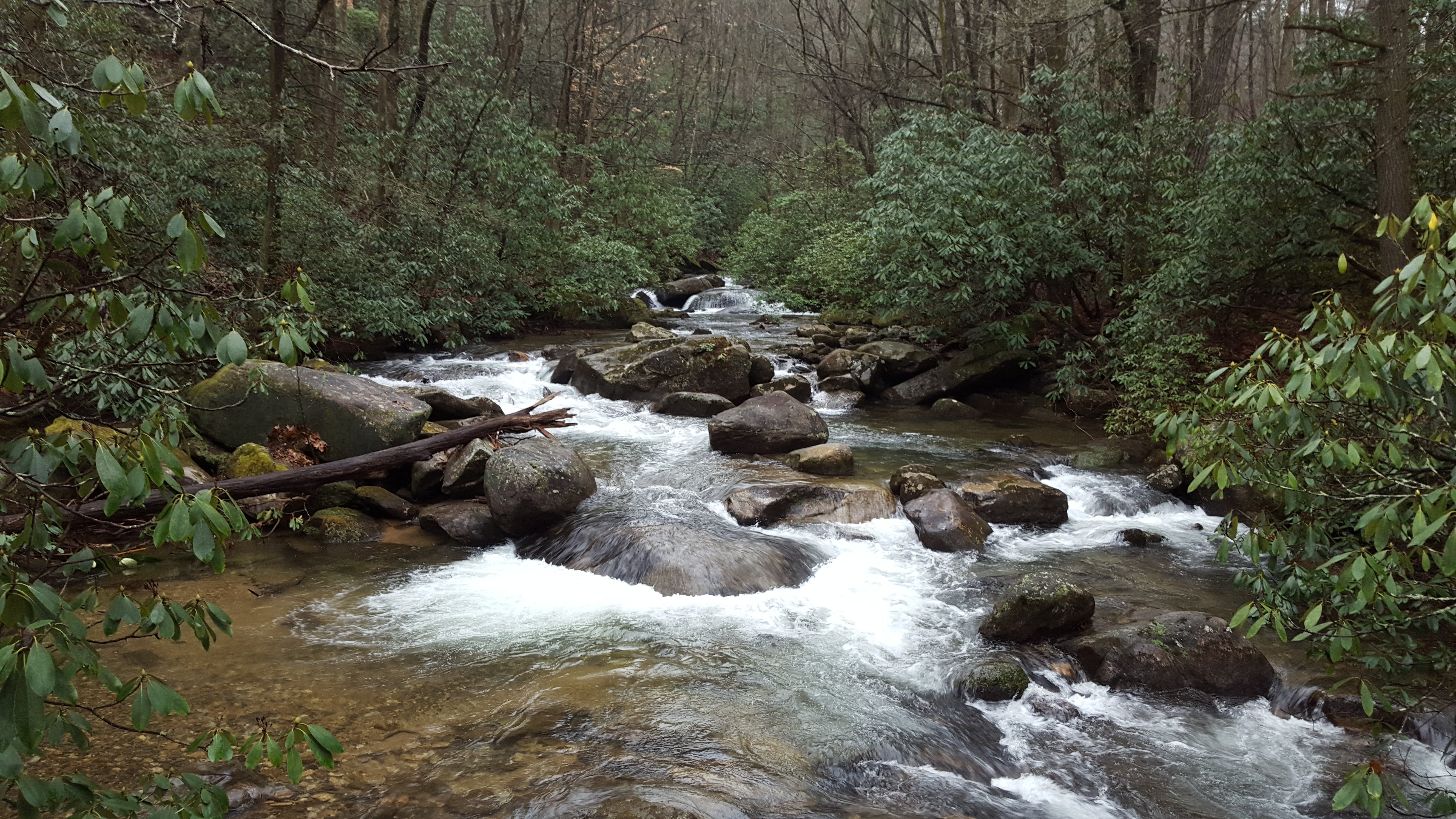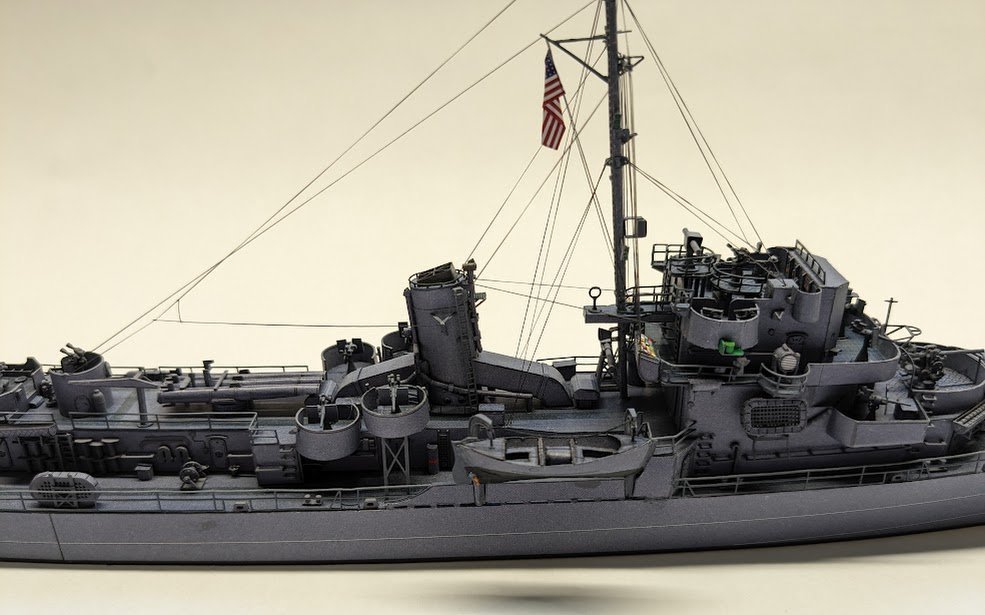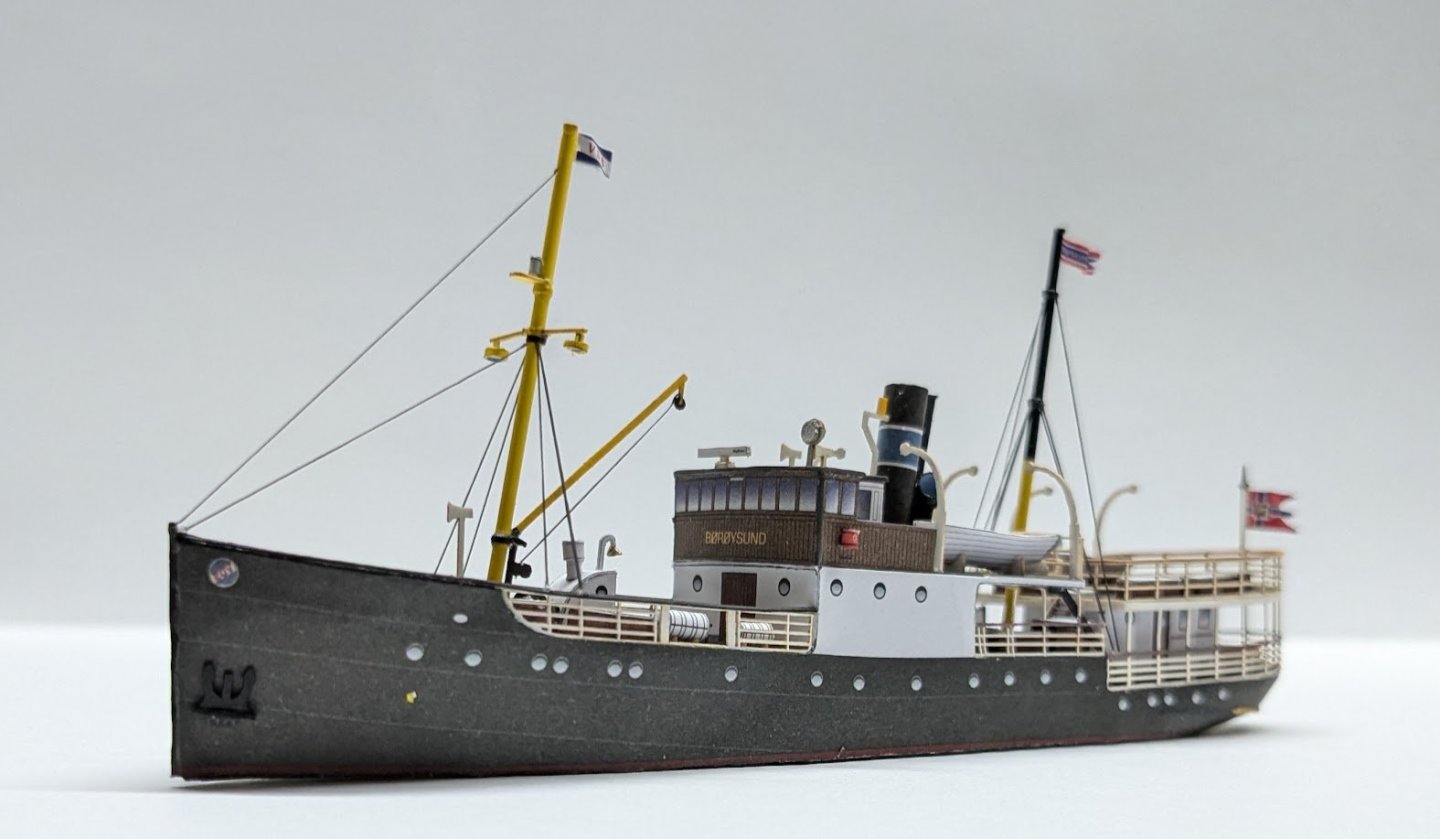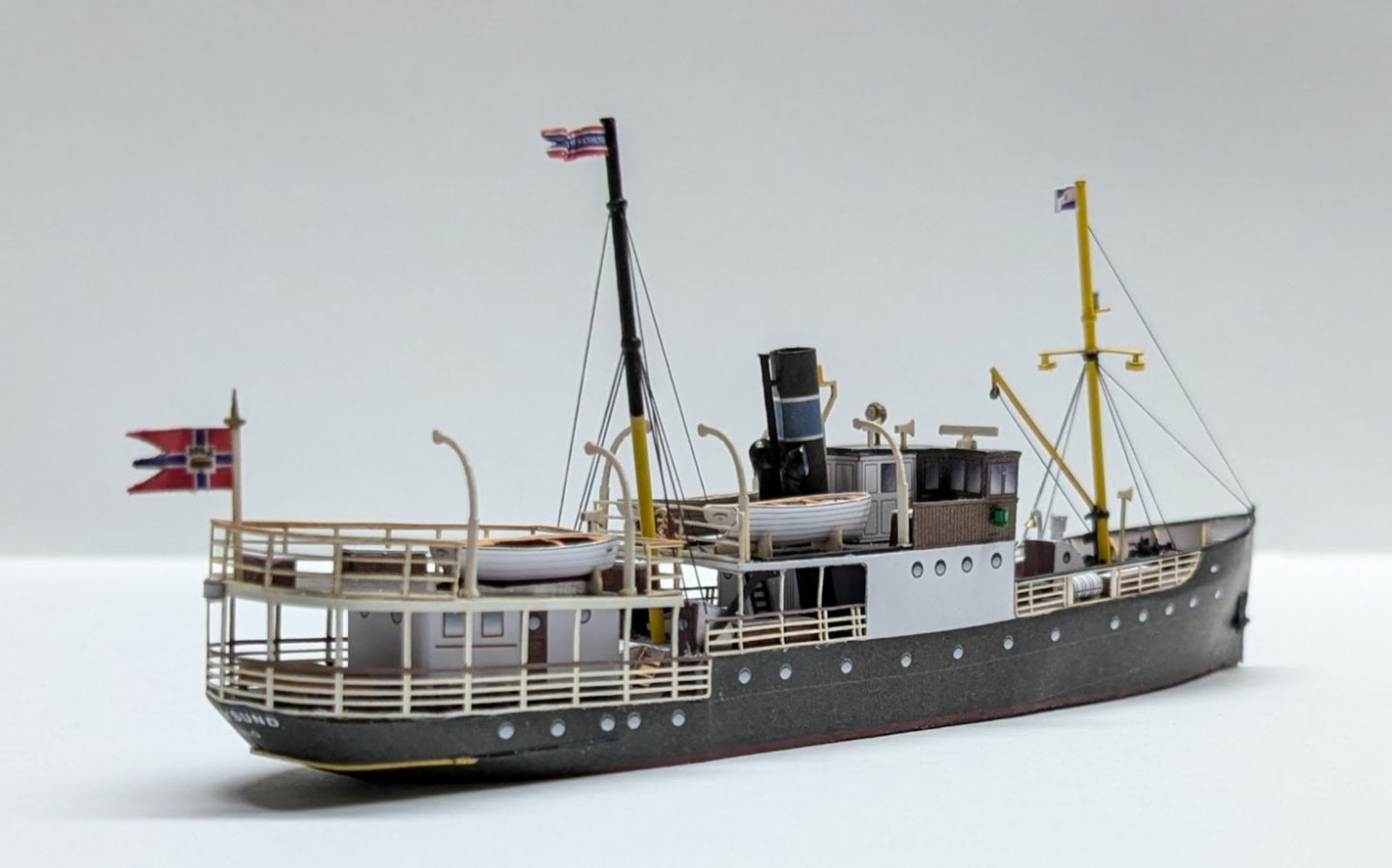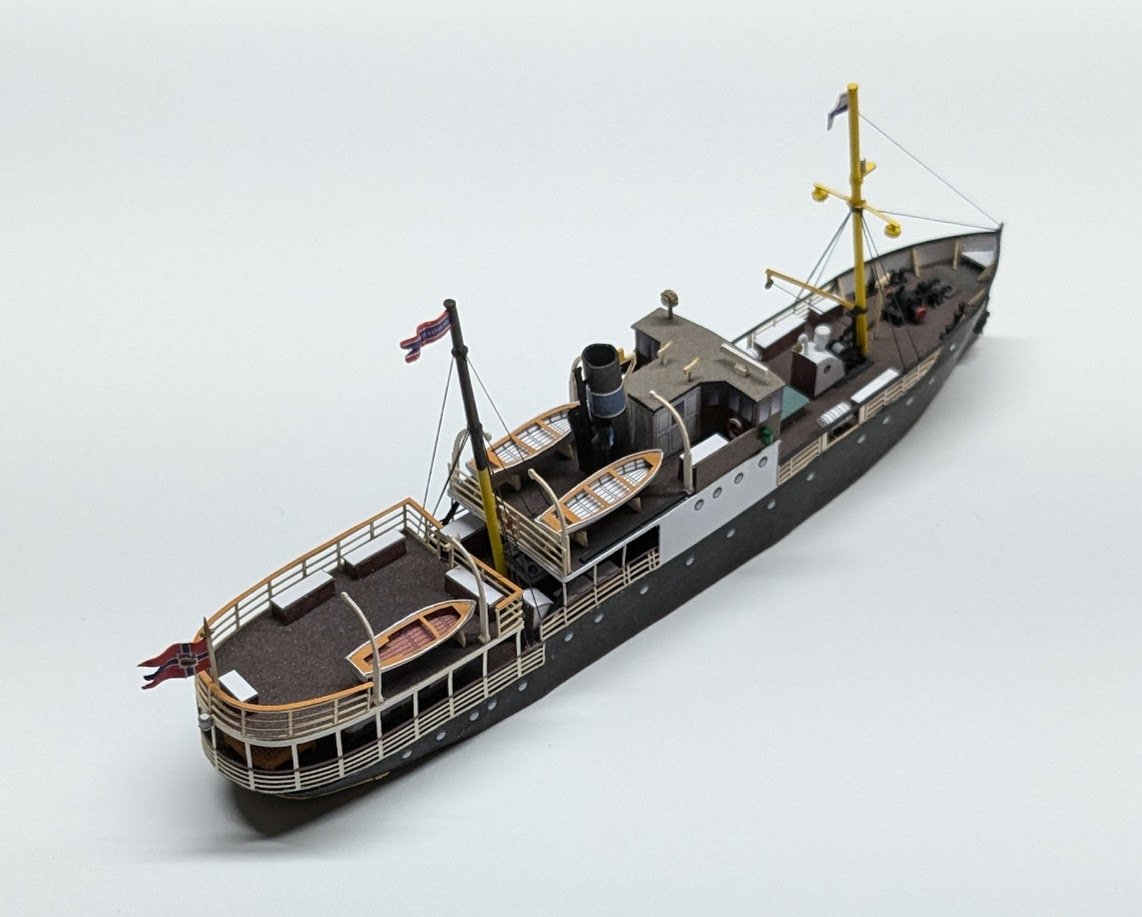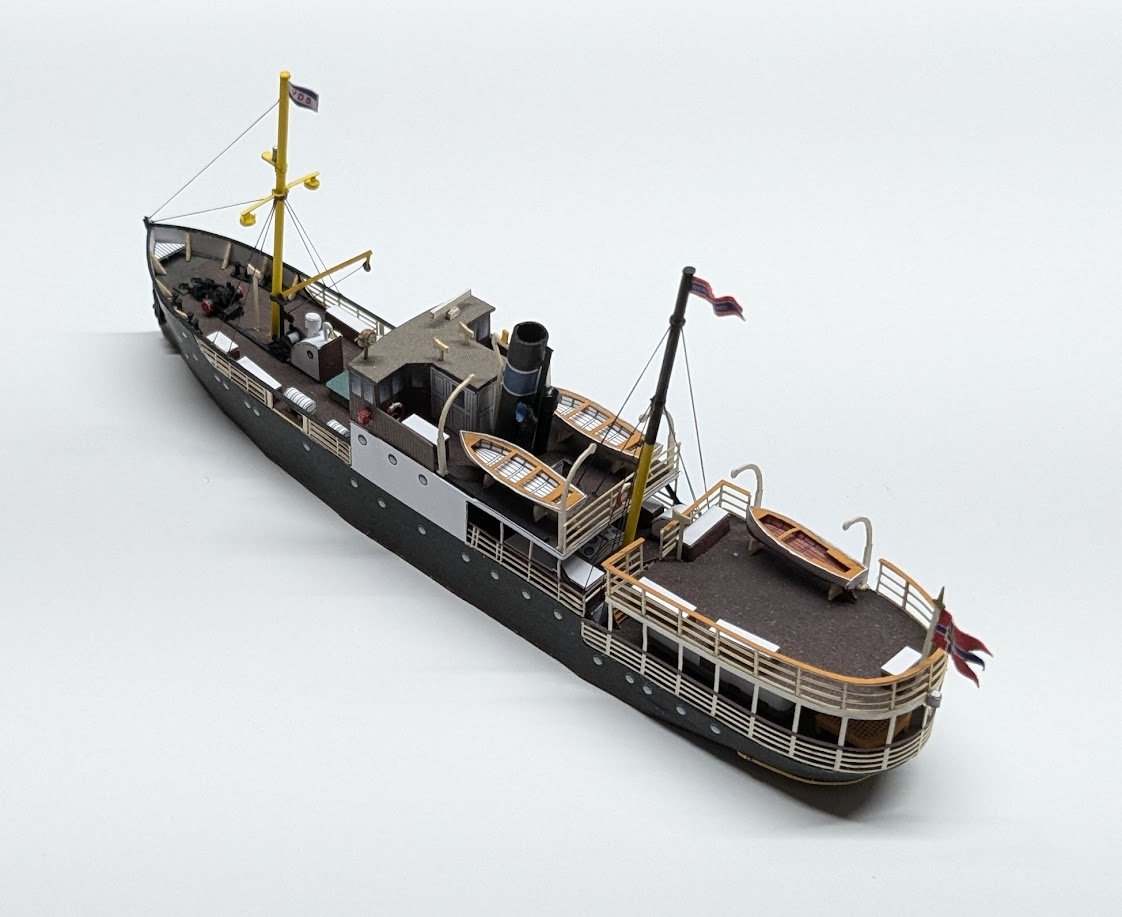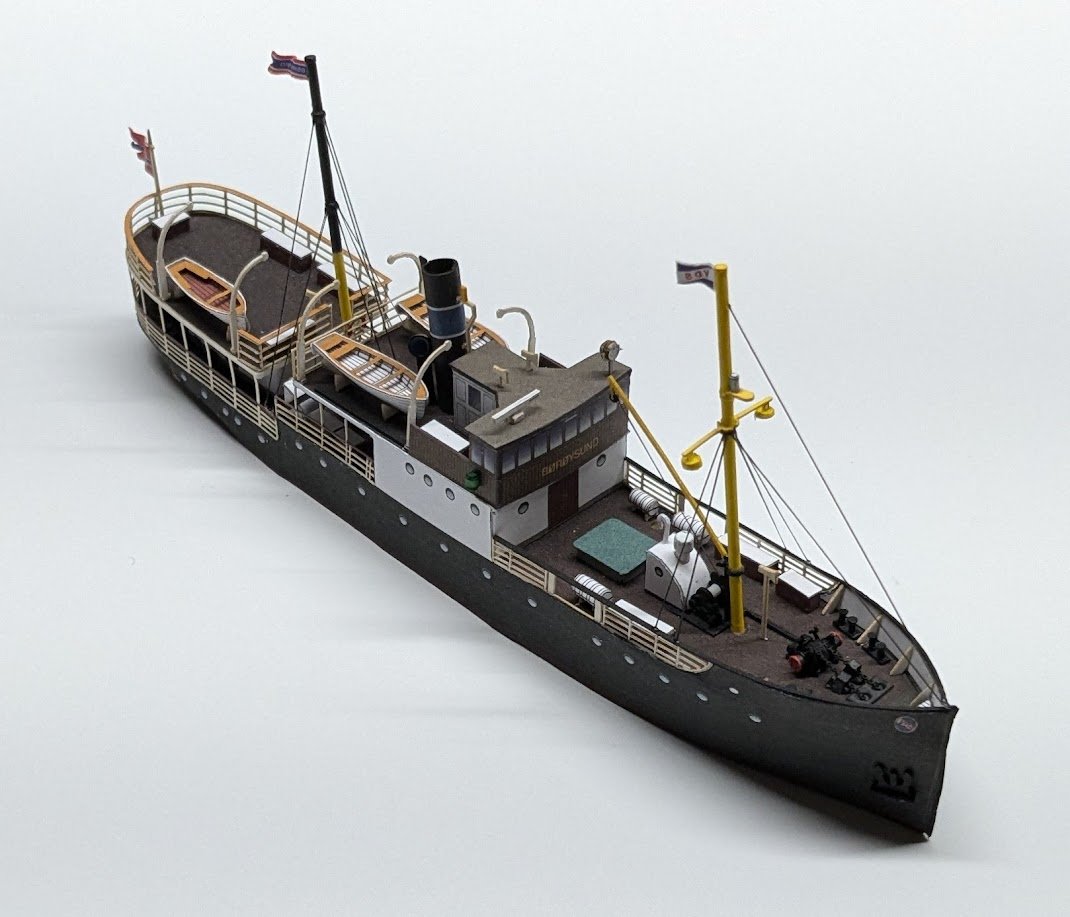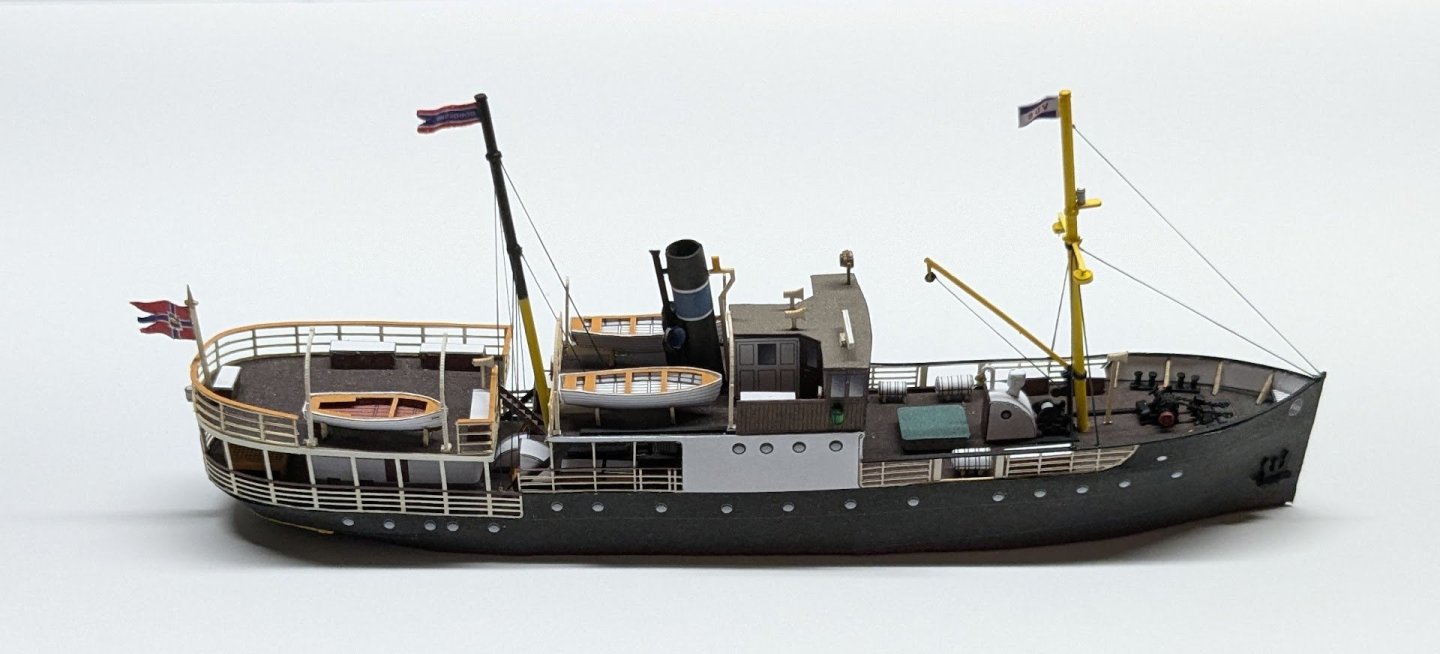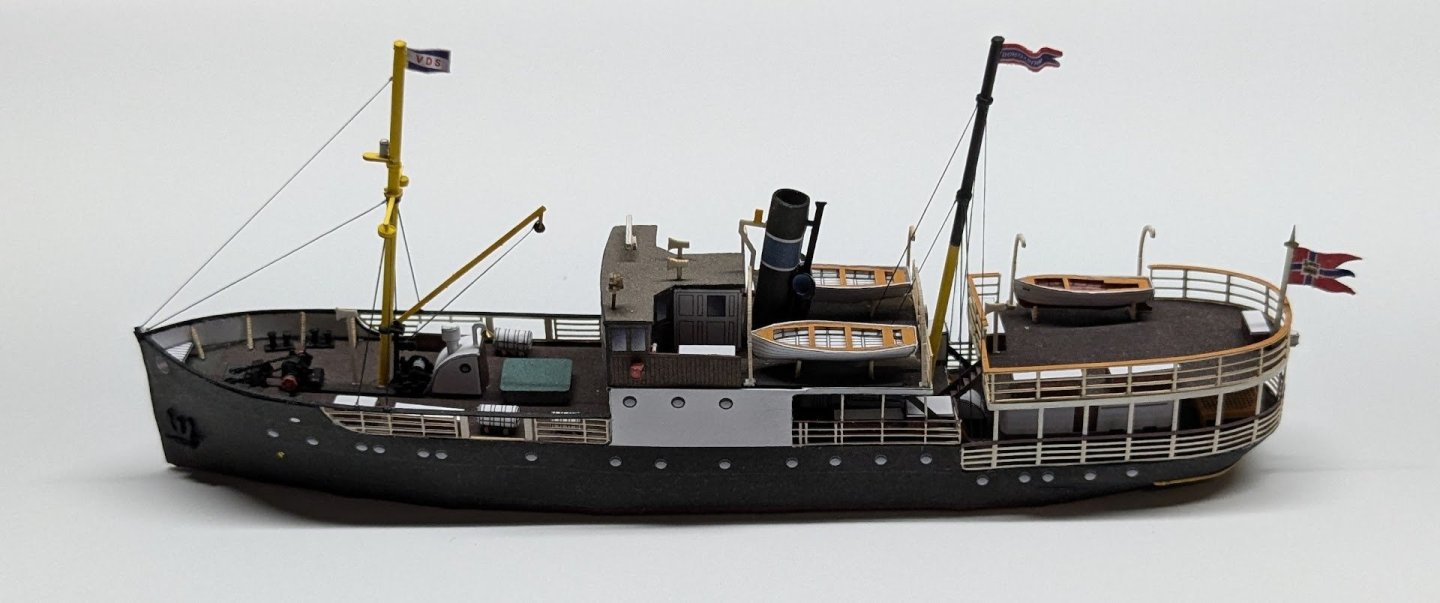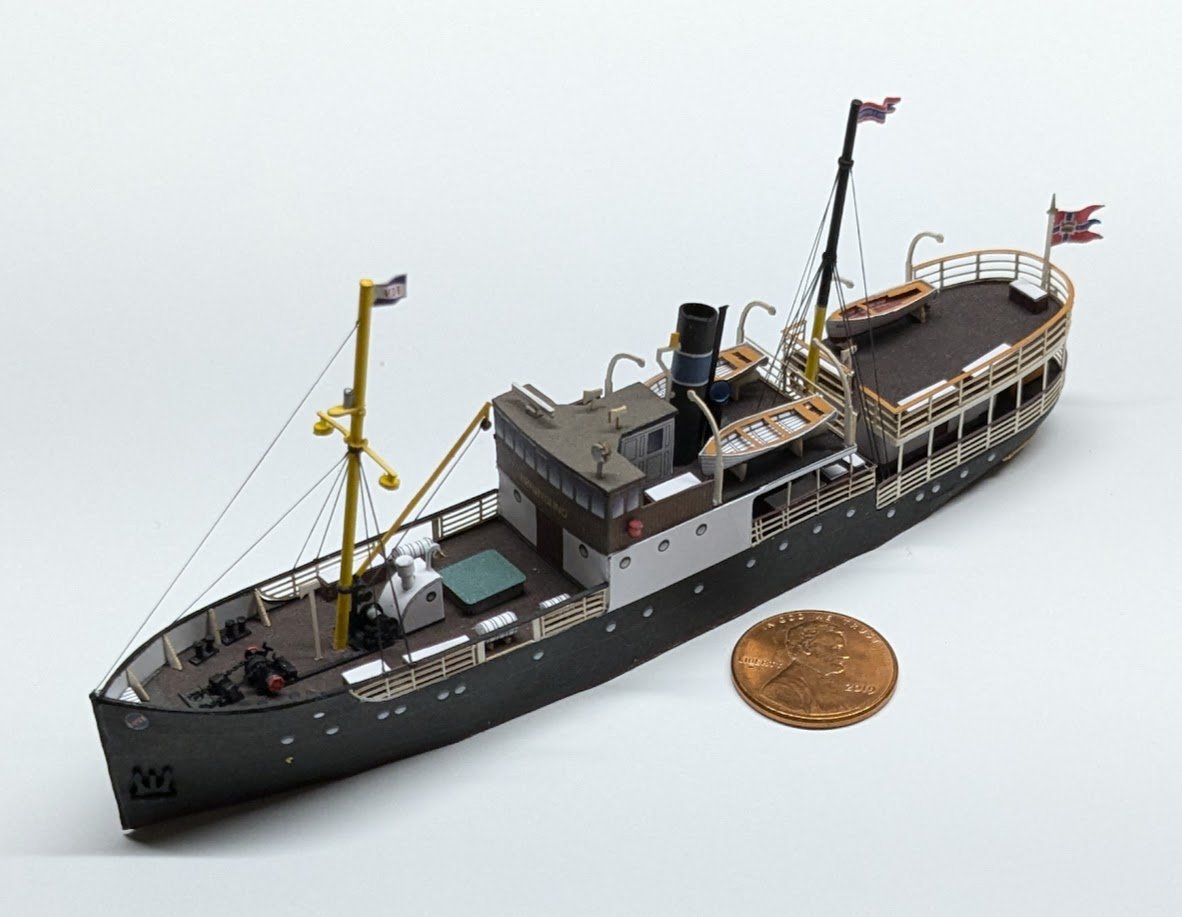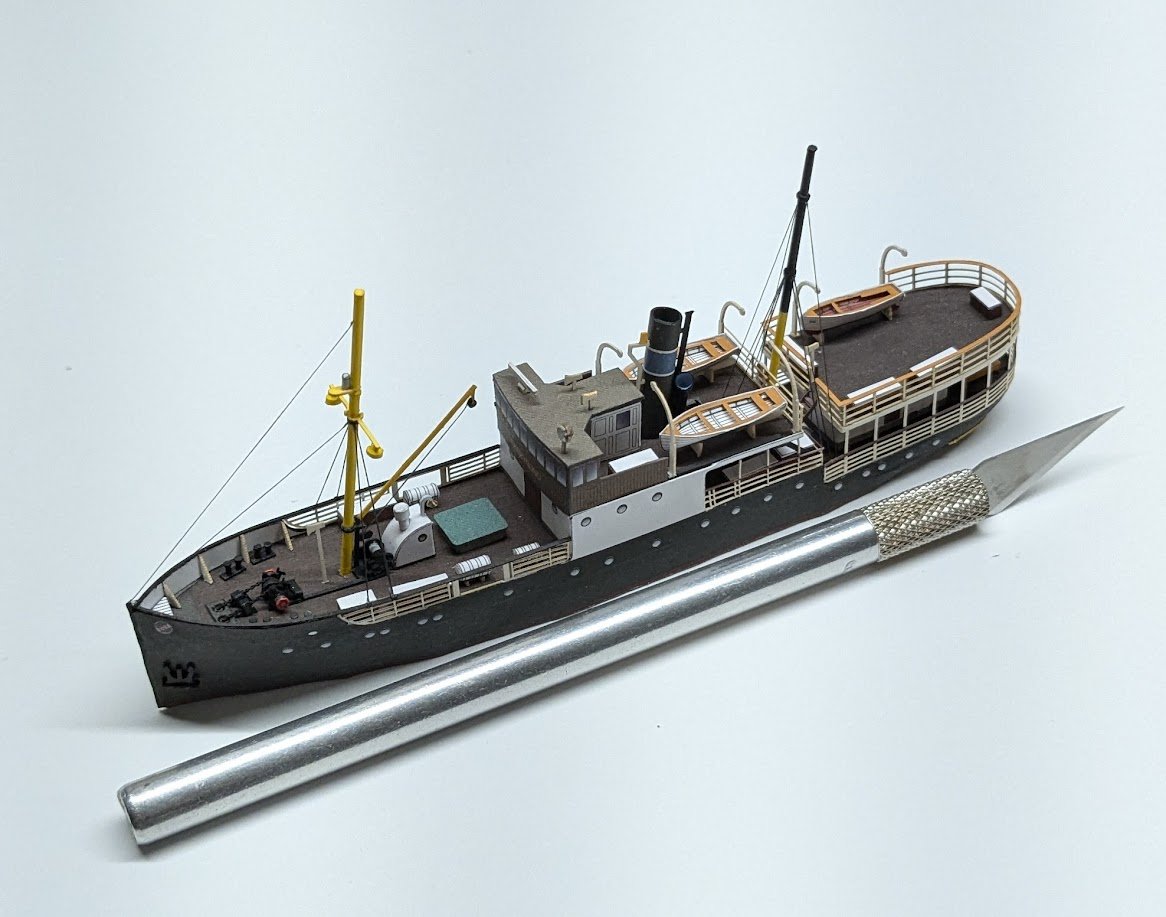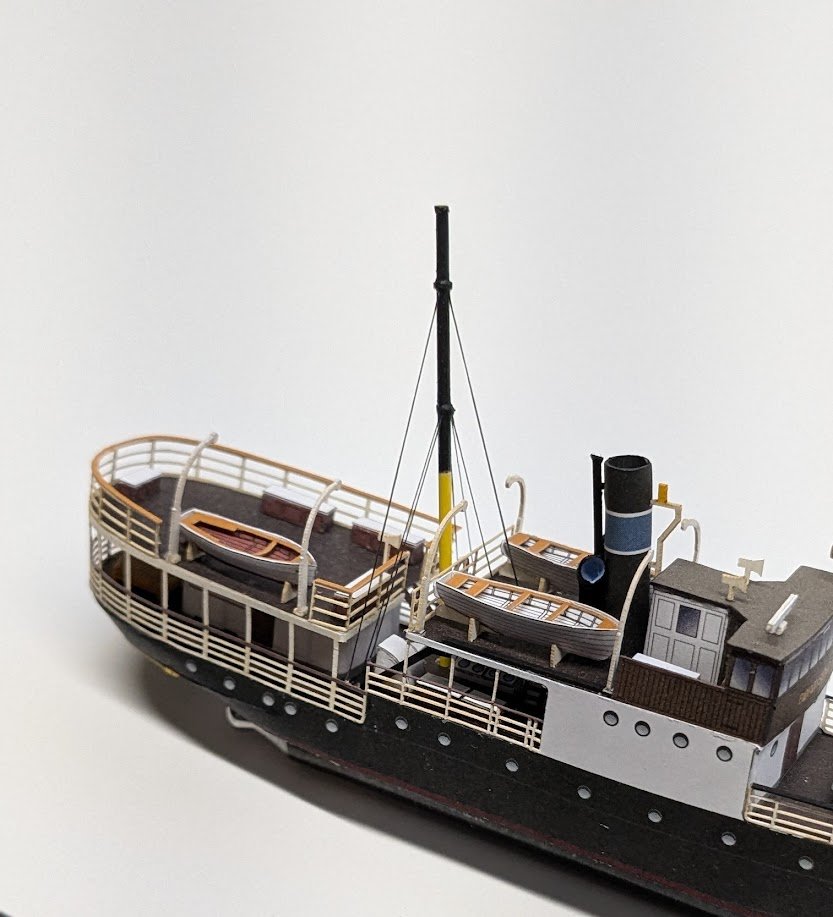-
Posts
10,378 -
Joined
-
Last visited
Content Type
Profiles
Forums
Gallery
Events
Everything posted by ccoyle
-

New Member Dale Mierzwik of Northern Colorado
ccoyle replied to DaleMierzwik's topic in New member Introductions
Welcome aboard! -

Intro to Card Models Intro and Table of Contents
ccoyle replied to ccoyle's topic in Card and Paper Models
Haha! That is one reason why I have avoided scratch building -- the conversions from European paper weights in gsm to US paper weights in pounds always make my head spin. But here's one web site where they've done the work for you: https://www.papersizes.org/us-international-weights.htm -
A spring clamp by any other name smells just as sweet.
-
Welcome aboard!
-
If you have a good printer you can easily print them at any scale you like. Paper is much easier to drape naturally than fabric. One thing to bear in mind is wind direction. If you display billowed sails, the flags should fly in same direction the imagined wind is coming from. If the sails are slack or the model is bare-poled, then ideally the flags should hang straight down. Here's a 1/250 scale paper flag hanging loosely:
- 32 replies
-
- Bounty
- Constructo
-
(and 1 more)
Tagged with:
-
Such a lovely model, Marek! I do hope we will see more of your work in the future. Cheers!
- 158 replies
-
- San Felipe
- Panart
-
(and 1 more)
Tagged with:
-
Welcome aboard!
-
All done! One month from start to finish. Any faults in the finished product are entirely my own doing. The kit itself is a gem. I still need to work on my egg-crate hull skills -- once the hull popped off its glass plate, I tended to hold it in the same places, resulting in a little of the 'starving cow' look, but not too bad. Here's the final pics: I'm 95% certain that my next project is included in a package that's currently on its way here from Poland. Look for that one in the new year. Cheers!
-
This is essentially what wood modelers have been asking for for years, i.e., a plan set and set of bulkheads to get a build started.
-
The foremast is now complete. What a chore! I dropped one of the tiny deck lamps during construction, and of course it disappeared into the jaws of the Carpet Monster, never to be seen again, so I had to scratch-build a replacement. Then I noticed that I had glued the lamps to the wrong part of the mast, requiring some delicate surgery to remove them and re-glue them in the right place. But that part is done now -- whew!! All that is left is three navigation lights and the flags.
-
It's not unheard of for modelers to do just that, but I don't know where the upper limit is on how much a kit can be enlarged and retain its sharp lines. Going from 1/250 to 1/48 would be quite a leap.
-
Finally got around to rigging the aft mast. Boy, was that an aggravating task!! Part of the reason for that is that the diagrams are fairly vague about where the various stays attach, and there are no insertion marks on the parts. I needed to consult some photos online. The other aggravation factor was simply the pain of having to work with very short pieces of EZ-Line in very tight spaces -- not very relaxing. BTW, I'm not doing all of the rigging. The rigging for the davits, for example, would be IMHO far too tedious and annoying than the results would be worth, and besides there is a lot of missing davit hardware, e.g., blocks, cleats. Also besides, I showed my wife the finished rigging, and her reaction was, "What rigging?", which solidifies the decision in my view.
-
Vous démarrez très bien. Veuillez noter que les messages doivent être rédigés en anglais. Un traducteur Internet peut faire le travail à votre place, si nécessaire – c'est comme ça que je parle français ! You are off to a great start. Please be mindful that posts need to be made in English. An internet translator can do the work for you, if necessary -- that is how I speak French!
-
Wow! This model is incredible in every way. The painting is exceptional. A very good result indeed!
- 103 replies
-
- Soleil Royal
- Ship-of-the-line
-
(and 2 more)
Tagged with:
-
The main thing in any first planking job is to simply finish. You'd be surprised at how many modelers never make it past this step. Some remain permanently intimidated by the job and never even start!
- 19 replies
-
- Bounty Boat
- OcCre
-
(and 2 more)
Tagged with:
About us
Modelshipworld - Advancing Ship Modeling through Research
SSL Secured
Your security is important for us so this Website is SSL-Secured
NRG Mailing Address
Nautical Research Guild
237 South Lincoln Street
Westmont IL, 60559-1917
Model Ship World ® and the MSW logo are Registered Trademarks, and belong to the Nautical Research Guild (United States Patent and Trademark Office: No. 6,929,264 & No. 6,929,274, registered Dec. 20, 2022)
Helpful Links
About the NRG
If you enjoy building ship models that are historically accurate as well as beautiful, then The Nautical Research Guild (NRG) is just right for you.
The Guild is a non-profit educational organization whose mission is to “Advance Ship Modeling Through Research”. We provide support to our members in their efforts to raise the quality of their model ships.
The Nautical Research Guild has published our world-renowned quarterly magazine, The Nautical Research Journal, since 1955. The pages of the Journal are full of articles by accomplished ship modelers who show you how they create those exquisite details on their models, and by maritime historians who show you the correct details to build. The Journal is available in both print and digital editions. Go to the NRG web site (www.thenrg.org) to download a complimentary digital copy of the Journal. The NRG also publishes plan sets, books and compilations of back issues of the Journal and the former Ships in Scale and Model Ship Builder magazines.

